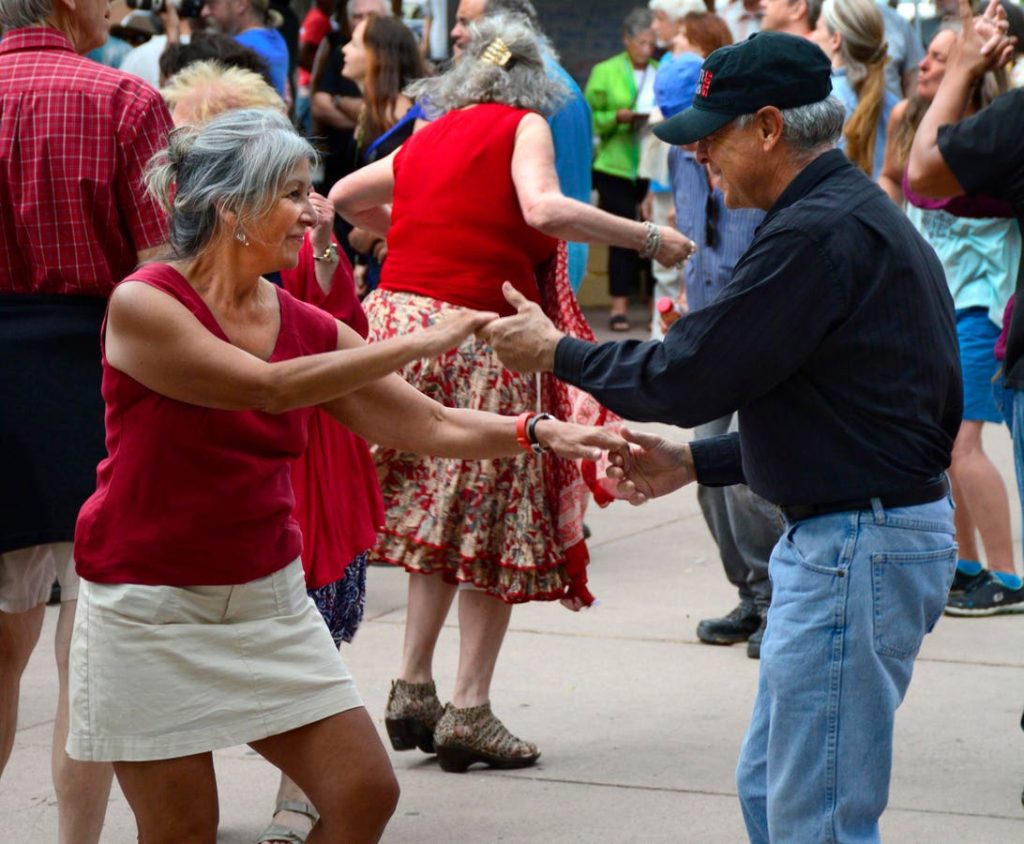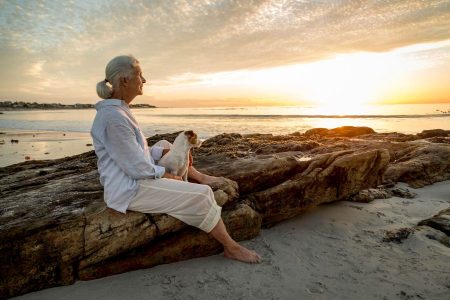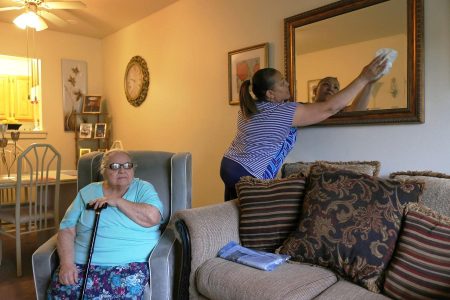When’s the last time you made a friend? Not just someone you see at work, or someone who is an acquaintance – a real friend. Someone you can call on and confide in, and who has your best interest at heart, and who can lean on you as well.
In a previous article, I described the reasons why it is particularly important to make friends after retirement. Sanjay Gupta, author of the book “Keep Sharp: Build a Better Brain at Any Age,” calls friends, “connection protection” for being strong and resilient. Friendships are arguably the antidote to the epidemic of loneliness faced by older adults as people leave behind their social connections and identity provided by work.
After extensive research, David Niven wrote the book “The 100 Simple Secrets of Happy People: What Scientists Have Learned and How You Can Use It.” “Contrary to the belief that happiness is hard to explain, or that it depends on having great wealth,” he writes, “researchers have identified the core factors in a happy life. The primary components are number of friends, closeness of friends, closeness of family, and relationships with co-workers and neighbors. Together these features explain about 70 percent of personal happiness.”
In other words, your happiness is heavily influenced by your relationships with other people. It may sound simple to encourage people to make friends after retirement (which can include reconnecting with old friends or making new friends), but that is not usually the case. While young children can come home from school with a best friend in a day, it is more complicated for adults. We get stuck in our ways and often it is hard for us to get out of our comfort zone.
What the Research Shows
Julie Beck spent three years interviewing friends about their friendships. These interviews turned into “The Friendship Files” for “The Atlantic.” Beck interviewed 100 friends and concluded there were six forces that help form friendships, maintain, and sustain them through the years: accumulation, attention, intention, ritual, imagination, and grace. Her research is being turned into a forthcoming book “The Friends We Made Along The Way.”
Accumulation of time spent together matters. One study estimates that it takes spending 40 to 60 hours together within the first six weeks of meeting to turn an acquaintance into a casual friend, and about 80 to 100 hours to become more than that. When time spent together accumulates, friendships are formed. The time spent can be spread out over time or condensed into a shorter time period such as a course, workshop, or travel experience. So friendships unsurprisingly tend to form in places where people spend a lot of their time anyway: work, school, church, extracurricular activities.
Paying attention goes a long way when forging these unexpected friendships—noticing when you click with someone, being open to chance encounters. It helps to step out of our habits and into the moment. Because as much as we may feel like our social networks are set and settled, it’s never too late to meet someone who will be important to you for the rest of your life.
While attention is important, it is critical to set an intention. When opportunity arises, you have to put yourself out there, and that requires courage, vulnerability, and a willingness to let things be awkward. You need to learn to be comfortable with being uncomfortable.
One behavior that seems to make maintaining friendships easier is ritual. While a routine is habitual, rituals are experiences that take place with intention and can be transformative. Rituals are when something happens regularly with a focus on deepening relationships. They can take on a variety of ways to gather: book clubs, dinner groups, activities such as tennis, golf, pickleball, or bridge/card clubs, dance groups. Regardless if they are weekly, monthly, every six weeks, or every other month, a consistent ritual builds relationships and friendships.
Sometimes in-person or local rituals aren’t possible, but there are still many ways to consistently check in and nurture your friendships. For instance, I personally find that the effort of coordinating schedules is often the biggest barrier to seeing my friends. It would be easy to fall out of touch, so I schedule appointments to call so that we don’t play phone tag. When something is on my schedule, it will happen.
Friendship Formula
Shasta Nelson, author of “Friendtimacy: How to Deepen Friendships for Lifelong Health and Happiness,”created a formula where three characteristics have to exist for all healthy relationships and she believes these three are nonnegotiable.
Friendship = Positivity + Consistency + Vulnerability
• Positivity means positive feelings. “Raising the emotional happiness in each other.”
• Consistency means consistent interaction. “Repetition or regularity that develops patterns, rituals, and expectations in our relationship.”
• Vulnerability means meaningful sharing. “Validating feelings and listening.” Being seen.
That last point – being seen – is an important friendship subject all its own. David Brooks’ latest book is titled “How to Know a Person: The Art of Seeing Others Deeply and Being Deeply Seen.” In order to address the polarization and isolation within society, he believes we need to focus on skills that can be learned, but are not being taught in most schools. In an interview on CBS Sunday Morning, Brooks said his hope is that “people just learn to see each other. [If] there’s one skill at the center of any healthy family, community, organization or country, it’s the ability to see each other and to make each other feel seen, heard and understood.”
Brooks describes two distinct types of people, diminishers and illuminators: He says, “My theory is that in any group of people, there are some people [who] are diminishers. They make you feel invisible, unseen. They’re not curious about you. They stereotype you. They label you. And then, there are other people who are illuminators. They are people who are just curious about you, and they make you feel lit up.”
To highlight the illuminators, six years ago Brooks started a not-for-profit organization called WEAVE: The Social Fabric Project. The website states that WEAVE “invests in people and the people who build it.” The focus is on weaving together communities and restoring social trust.
Manufacture Friends
Ayse Birsel, author of the books “Design the Life You Love” and “Design the Long Life You Love,” describes how “friends are made rather than found … As you are designing your life, think of a friendship factory where you can literally manufacture friends. To make friends in this factory, you need to build trust, have common interests and values, and spend time together.”
Form or Join a Club/Group
Follow your passions and interests. Find and join a group of like-minded people who enjoy the same activities (sailing, biking, rowing, running, cards, dancing) or form a group. Since I told my husband he needed more friends and he loves to read, I suggested he create a men’s book club. Invite two friends (people who like to read and not necessarily your best friends) and ask them to invite two others and have them invite two others. Currently there are 10 men in the book club and they each value being in the group. In addition to reading books, they socialize and the group meets the friendship test: Positive vibes, they meet consistently about every other month, and they have gotten to know new people and share stories.
Go on “Wisdom Walks.”
A friend of mine and a few friends of hers started an eclectic walking group of about a dozen people. We only meet twice a month at a central location and we go with whomever shows up. Everyone and anyone can invite someone to join. It is an open and inclusive group. But just calling it “Wisdom Walkers” sets the tone and creates positive and interesting conversations.
Ask Questions
The best way to get to know someone is one-on-one. Reach out and invite someone you want to reconnect with or you want to get to know. Ask questions.
I like to ask students: “What is the difference between being interesting and being interested?” John Gardner, Secretary of Health, Education, and Welfare under President Johnson, wrote an article for the Stanford Magazine in 1994 titled “The Road To Self-Renewal” where he emphasizes to “be interested.” He writes, “Everyone wants to be interesting–but the vitalizing thing is to be interested. Keep a sense of curiosity. Discover new things. Care. Risk failure. Reach out.”
Use the Golden Retriever Technique
You can learn a lot about making friends from Golden retrievers. They are always happy to see you and they couldn’t care less whether you are happy to see them, points out writer Sarah Todd in “Quartz.” They never worry about putting themselves out there with new people. They don’t worry about anything. Using the Golden Retriever Technique means that if someone ignores you or shows little interest, don’t take it personally, or use it as a justification to stop trying to make friends. Just move on and find someone else who appreciates you and seems interested in getting to know you.
Making friends as an adult doesn’t happen overnight. It takes time to figure out who you can trust, who listens, who is fun, who lifts you up and who is a good influence on you. Chip Conley, founder of the Modern Elder Academy and author of “Learning to Love Midlife: Twelve Reasons Why Life Gets Better With Age,” believes friendship is a practice, and that people can improve their friendship skills over time … He suggests that friendship is a muscle that needs to be exercised.” And if your friendship muscles are out of shape, be assured that you can build them back up with practice and intention.
In order to make friends, we have to get out of our comfort zones. Friendships are relationships that take time, money, and energy to maintain—often resources we don’t have. If we understand the value friendships play in our lives, it’s an investment with great payoffs in less loneliness, better health, and more happiness. Now is the time to exercise your friendship muscle.
Read the full article here













